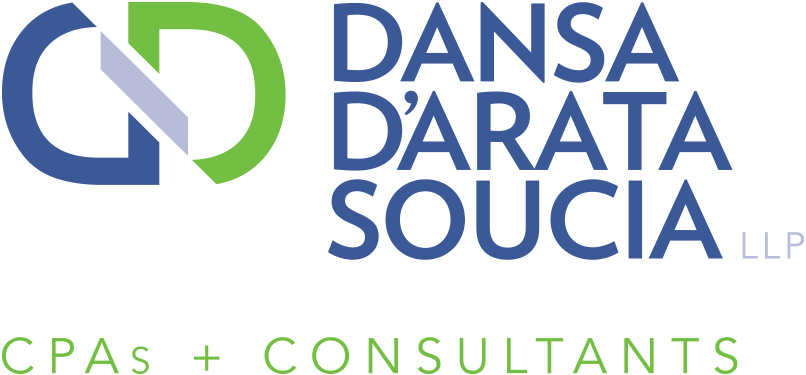Home-related tax breaks are valuable on 2017 returns, will be less so for 2018
 Home ownership is a key element of the American dream for many, and the U.S. tax code includes many tax breaks that help support this dream. If you own a home, you may be eligible for several valuable breaks when you file your 2017 return. But under the Tax Cuts and Jobs Act, your home-related breaks may not be as valuable when you file your 2018 return next year.
Home ownership is a key element of the American dream for many, and the U.S. tax code includes many tax breaks that help support this dream. If you own a home, you may be eligible for several valuable breaks when you file your 2017 return. But under the Tax Cuts and Jobs Act, your home-related breaks may not be as valuable when you file your 2018 return next year.
2017 vs. 2018
Here’s a look at various home-related tax breaks for 2017 vs. 2018:
Property tax deduction. For 2017, property tax is generally fully deductible — unless you’re subject to the alternative minimum tax (AMT). For 2018, your total deduction for all state and local taxes, including both property taxes and either income taxes or sales taxes, is capped at $10,000.
Mortgage interest deduction. For 2017, you generally can deduct interest on up to a combined total of $1 million of mortgage debt incurred to purchase, build or improve your principal residence and a second residence. However, for 2018, if the mortgage debt was incurred on or after December 15, 2017, the debt limit generally is $750,000.
Home equity debt interest deduction. For 2017, interest on home equity debt used for any purpose (debt limit of $100,000) may be deductible. (If home equity debt isn’t used for home improvements, the interest isn’t deductible for AMT purposes). For 2018, the TCJA suspends the home equity interest deduction. But the IRS has clarified that such interest generally still will be deductible if used for home improvements.
Mortgage insurance premium deduction. This break expired December 31, 2017, but Congress might extend it.
Home office deduction. For 2017, if your home office use meets certain tests, you may be able to deduct associated expenses or use a simplified method for claiming the deduction. Employees claim this as a miscellaneous itemized deduction, which means there will be tax savings only to the extent that the home office deduction plus other miscellaneous itemized deductions exceeds 2% of adjusted gross income. The self-employed can deduct home office expenses from self-employment income. For 2018, miscellaneous itemized deductions subject to the 2% floor are suspended, so only the self-employed can deduct home office expenses.
Home sale gain exclusion. When you sell your principal residence, you can exclude up to $250,000 ($500,000 for married couples filing jointly) of gain if you meet certain tests. Changes to this break had been proposed, but they weren’t included in the final TCJA that was signed into law.
Debt forgiveness exclusion. This break for homeowners who received debt forgiveness in a foreclosure, short sale or mortgage workout for a principal residence expired December 31, 2017, but Congress might extend it.
Additional rules and limits apply to these breaks. To learn more, contact us. We can help you determine which home-related breaks you’re eligible to claim on your 2017 return and how your 2018 tax situation may be affected by the TCJA.
© 2018


 If you suffered damage to your home or personal property last year, you may be able to deduct these “casualty” losses on your 2017 federal income tax return. For 2018 through 2025, however, the Tax Cuts and Jobs Act suspends this deduction except for losses due to an event officially declared a disaster by the President.
If you suffered damage to your home or personal property last year, you may be able to deduct these “casualty” losses on your 2017 federal income tax return. For 2018 through 2025, however, the Tax Cuts and Jobs Act suspends this deduction except for losses due to an event officially declared a disaster by the President. Whether you’re claiming charitable deductions on your 2017 return or planning your donations for 2018, be sure you know how much you’re allowed to deduct. Your deduction depends on more than just the actual amount you donate.
Whether you’re claiming charitable deductions on your 2017 return or planning your donations for 2018, be sure you know how much you’re allowed to deduct. Your deduction depends on more than just the actual amount you donate. Recently a number of states have changed their Business Tax Laws in an effort to capture business economic activity conducted in their respective states and subject such activity to income tax. “Nexus” is referred to as the standard which, when satisfied, will subject a business to file and pay income taxes in a state. Prior to the ever evolving world of technology in which we currently exist, nexus was commonly satisfied for almost all states when there was some form of “physical presence” in the state (i.e. an out of state business that had offices, employees, agents, or property in the state). As a result of e-commerce and other technological advances, the “physical presence” test traditionally applied as the standard for capturing out of state business activities has become outdated and has resulted in many states changing their approach to an “economic presence” standard.
Recently a number of states have changed their Business Tax Laws in an effort to capture business economic activity conducted in their respective states and subject such activity to income tax. “Nexus” is referred to as the standard which, when satisfied, will subject a business to file and pay income taxes in a state. Prior to the ever evolving world of technology in which we currently exist, nexus was commonly satisfied for almost all states when there was some form of “physical presence” in the state (i.e. an out of state business that had offices, employees, agents, or property in the state). As a result of e-commerce and other technological advances, the “physical presence” test traditionally applied as the standard for capturing out of state business activities has become outdated and has resulted in many states changing their approach to an “economic presence” standard. Employees tend not to fully appreciate or use their retirement benefits unless their employer communicates with them about the plan clearly and regularly. But workers may miss or ignore your messaging if it all looks and “sounds” the same. That’s why you might want to consider getting more creative. Consider these ideas:
Employees tend not to fully appreciate or use their retirement benefits unless their employer communicates with them about the plan clearly and regularly. But workers may miss or ignore your messaging if it all looks and “sounds” the same. That’s why you might want to consider getting more creative. Consider these ideas: If you purchased qualifying property by December 31, 2017, you may be able to take advantage of Section 179 expensing on your 2017 tax return. You’ll also want to keep this tax break in mind in your property purchase planning, because the Tax Cuts and Jobs Act (TCJA), signed into law this past December, significantly enhances it beginning in 2018.
If you purchased qualifying property by December 31, 2017, you may be able to take advantage of Section 179 expensing on your 2017 tax return. You’ll also want to keep this tax break in mind in your property purchase planning, because the Tax Cuts and Jobs Act (TCJA), signed into law this past December, significantly enhances it beginning in 2018. Social media can be an inexpensive, but effective, way to market a company’s products or services. Like most businesses today, you’ve probably at least dipped your toe into its waters. Or perhaps you have a full-blown, ongoing social media strategy involving multiple sites and a variety of content.
Social media can be an inexpensive, but effective, way to market a company’s products or services. Like most businesses today, you’ve probably at least dipped your toe into its waters. Or perhaps you have a full-blown, ongoing social media strategy involving multiple sites and a variety of content. If you moved for work-related reasons in 2017, you might be able to deduct some of the costs on your 2017 return — even if you don’t itemize deductions. (Or, if your employer reimbursed you for moving expenses, that reimbursement might be excludable from your income.) The bad news is that, if you move in 2018, the costs likely won’t be deductible, and any employer reimbursements will probably be included in your taxable income.
If you moved for work-related reasons in 2017, you might be able to deduct some of the costs on your 2017 return — even if you don’t itemize deductions. (Or, if your employer reimbursed you for moving expenses, that reimbursement might be excludable from your income.) The bad news is that, if you move in 2018, the costs likely won’t be deductible, and any employer reimbursements will probably be included in your taxable income. You may keep a wary eye on your competitors, but sometimes it helps to look just a little bit deeper. Even if you’re a big fish in your pond, someone a little bigger may be swimming up just beneath you. Being successful means not just being aware of these competitors, but also knowing their approaches and results.
You may keep a wary eye on your competitors, but sometimes it helps to look just a little bit deeper. Even if you’re a big fish in your pond, someone a little bigger may be swimming up just beneath you. Being successful means not just being aware of these competitors, but also knowing their approaches and results. Whether you had a child in college (or graduate school) last year or were a student yourself, you may be eligible for some valuable tax breaks on your 2017 return. One such break that had expired December 31, 2016, was just extended under the recently passed Bipartisan Budget Act of 2018: the tuition and fees deduction.
Whether you had a child in college (or graduate school) last year or were a student yourself, you may be eligible for some valuable tax breaks on your 2017 return. One such break that had expired December 31, 2016, was just extended under the recently passed Bipartisan Budget Act of 2018: the tuition and fees deduction.